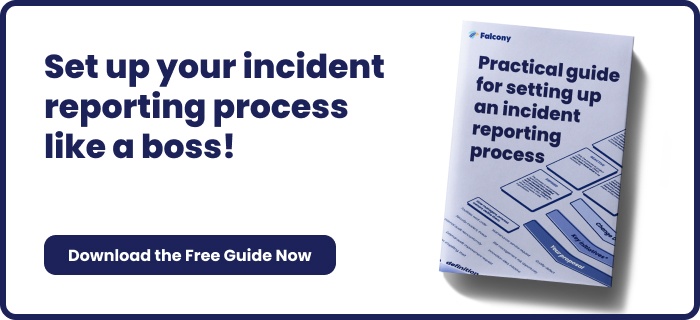9 Typical Templates for Work Capacity Risks
In the modern business landscape, risk management is an essential aspect of operational planning.
One area that often requires close attention is work capacity, as businesses must navigate challenges such as workforce shortages, fluctuating demand, and operational inefficiencies. Addressing these challenges in advance can prevent costly disruptions. Here, we will explore nine typical templates for identifying, assessing, and managing work capacity risks that businesses might face.
Workforce Availability Risk Template
Workforce availability is one of the most significant factors impacting work capacity. Businesses must evaluate the potential risks of losing critical employees due to illness, resignations, or retirements. This template involves tracking the number of available employees, their skills, and identifying key roles that would be difficult to fill quickly. A robust workforce availability risk template will provide insights into the potential impact on operations and help in creating succession plans and strategies for talent acquisition.
Demand Fluctuation Risk Template
Fluctuations in demand can affect the work capacity of an organisation. This template helps businesses assess how changes in customer demand—whether seasonal or driven by market conditions—can lead to either underutilisation or overloading of workforce resources. By forecasting demand patterns and aligning staffing levels accordingly, businesses can mitigate risks such as overworking employees or experiencing inefficiencies during quieter periods.
Skill Shortage Risk Template
As organisations become more reliant on specialised skills, the risk of skill shortages becomes more pronounced. This template helps identify roles or competencies that are difficult to hire for, as well as areas where skills may become obsolete. Addressing skill shortages often requires a proactive approach, such as training and development programmes, partnerships with educational institutions, or cross-training employees to ensure coverage for critical roles.
Technology Failure Risk Template
In today's digital world, businesses rely heavily on technology to support their operations. A failure in critical systems or technologies can severely impact work capacity, especially if employees rely on these tools for their daily tasks. This template focuses on identifying potential vulnerabilities in technological infrastructure and assessing the impact of a failure on workforce productivity. It also suggests mitigation strategies such as system backups, disaster recovery plans, and regular maintenance schedules to reduce the risk of downtime.
Health and Safety Risk Template
Health and safety risks can directly impact work capacity by leading to absenteeism, reduced productivity, and even legal liabilities. This template helps identify workplace hazards that could cause accidents or illnesses, thereby affecting employee health. It outlines preventative measures, such as safety training, ergonomic assessments, and health monitoring, to ensure a safe working environment and mitigate risks that could lead to workforce incapacity.
Workplace Environment Risk Template
The physical and psychological environment in which employees work plays a significant role in their productivity and well-being. Factors such as inadequate workspace, poor lighting, or high levels of stress can lead to reduced capacity or higher turnover rates. This template helps assess potential risks related to the workplace environment and recommends improvements to create a more conducive setting for optimal performance. It may also include strategies for improving employee involvement and morale.
Labour Market Risk Template
The labour market is constantly evolving, and fluctuations in availability of skilled workers can present a significant challenge to work capacity. This template evaluates external factors such as economic conditions, regional workforce trends, and competition for talent. By monitoring these external factors, businesses can anticipate risks such as an inability to hire or retain talent, and plan accordingly by offering competitive salaries, benefits, and other employee retention strategies.
Legal and Regulatory Risk Template
Changes in labour laws, health and safety regulations, or union agreements can affect an organisation’s ability to meet its workforce requirements. A legal and regulatory risk template helps businesses stay informed of potential changes in the legal landscape and assess their impact on work capacity. This includes monitoring laws related to working hours, wage regulations, and employment contracts, as well as implementing processes to ensure compliance.
Supply Chain Risk Template
For businesses dependent on external suppliers or contractors, supply chain disruptions can impact work capacity. A delay in receiving critical materials or services may prevent employees from completing tasks or may lead to idle time. This template helps identify risks within the supply chain, such as supplier instability or geopolitical factors, and outlines strategies for managing these risks, such as diversifying suppliers, building buffer stocks, and developing contingency plans.
Conclusion
Identifying and mitigating work capacity risks is critical to ensuring that an organisation operates efficiently and effectively. By using these nine templates, businesses can gain valuable insights into potential risks and put proactive measures in place to safeguard against capacity constraints. Whether it's ensuring that you have the right number of skilled workers or addressing potential technological failures, these templates serve as a foundation for a comprehensive risk management strategy that supports long-term success.
If you're looking for a platform to manage any and all types of risks, we've got you covered. Falcony | Risks is easy-to-use, boosts two-way communication, has customisable workflows, automated analytics, vast integration possibilities and more. Start your 30-day trial or Contact us for more information:
We are building the world's first operational involvement platform. Our mission is to make the process of finding, sharing, fixing and learning from issues and observations as easy as thinking about them and as rewarding as being remembered for them.
By doing this, we are making work more meaningful for all parties involved.
More information at falcony.io.

Related posts
7 Common Loss Prevention Risks in Automotive and Vehicle Manufacturing
Loss prevention is a critical aspect of automotive and vehicle manufacturing, aiming to...
9 Critical Loss Prevention Risks in Warehousing and Distribution
In the fast-paced world of warehousing and distribution, businesses must continually address...
5 Loss Prevention Risks Not to Overlook in Manufacturing
In the manufacturing industry, maintaining the integrity of operations and safeguarding assets is...







